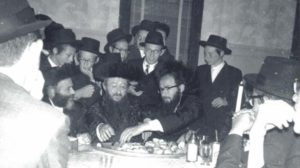Keeper of the Trust
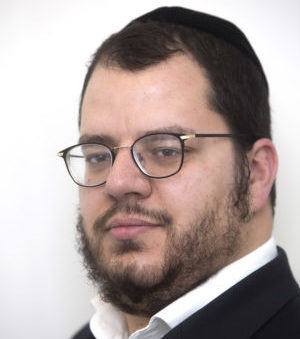
A final conversation with the Gaavad, Rav Yitzchok Tovia Weiss
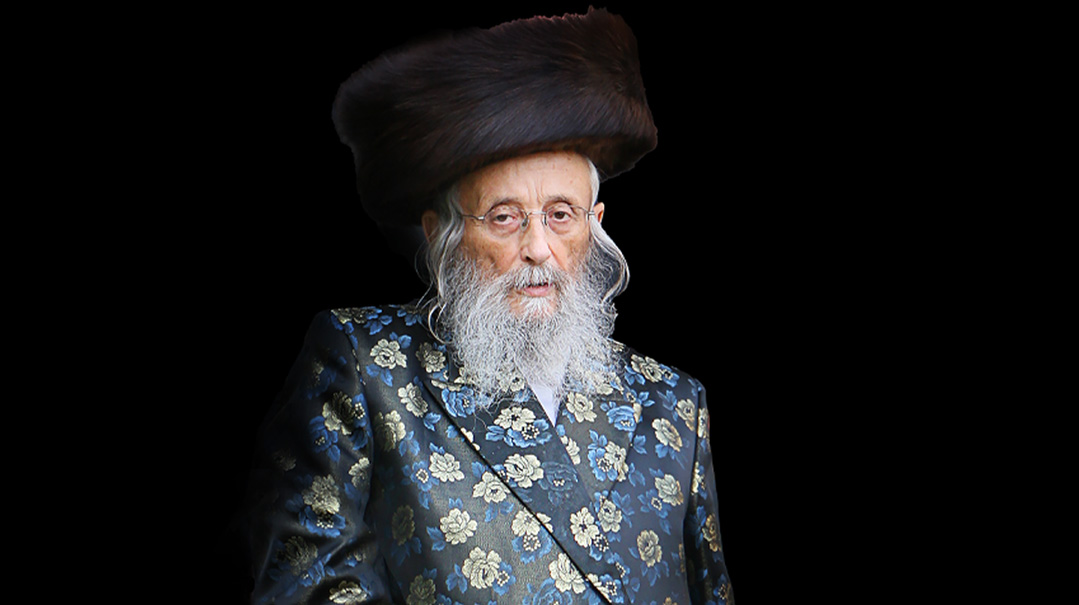
Photos: Avraham Elbaz, Mattis Goldberg, Elchanan Kotler
Rechov Givat Moshe 2 in Jerusalem, where Rav Yitzchok Tovia Weiss ztz”l lived for close to two decades before his petirah last Shabbos at age 95, is located on the border between the sacred and the mundane, between the high-tech offices of Har Hotzvim and the neighboring citadels of Torah.
That said a lot about the rav who was known as a kanoi for everything holy, from the fierce protection of Shabbos to the battle for the protection of graves, to keeping the government’s hands out of chadarim and yeshivos.
But somehow, public officials made their way to his door as well, creating an unprecedented relationship between the Eidah leadership and the country’s power brokers. (He once visited with former public security minister Yitzhak Aharonovitch of the Yisrael Beiteinu party, and the two conversed in Yiddish, a language the minister knew well from his immigrant parents. He also held a meeting with former justice minister Yaakov Neeman a”h in rich Hungarian-Yiddish.)
When the Gaavad first arrived after living in Antwerp for 37 years, where he initially served as a yeshivah rebbi and later was appointed as a rav and a dayan for the local community, he was greeted by Rav Meshulam Dovid Soloveitchik of Brisk. “I’m giving you a piece of advice,” the longtime rosh yeshivah and son of the Brisker Rav told the newly-minted Gaavad. “Open a kollel and get chavrusas and set your learning seder in stone. Otherwise, the politics and strife of Yerushalayim will sweep you in.”
The Gaavad followed the advice, spending the first four and a half hours of his day surrounded by 50 diligent avreichim and a non-negotiable chavrusa. The sign hanging at the entrance to his beis medrash reads, “It is strictly forbidden to interrupt the Gaavad while he is learning.”
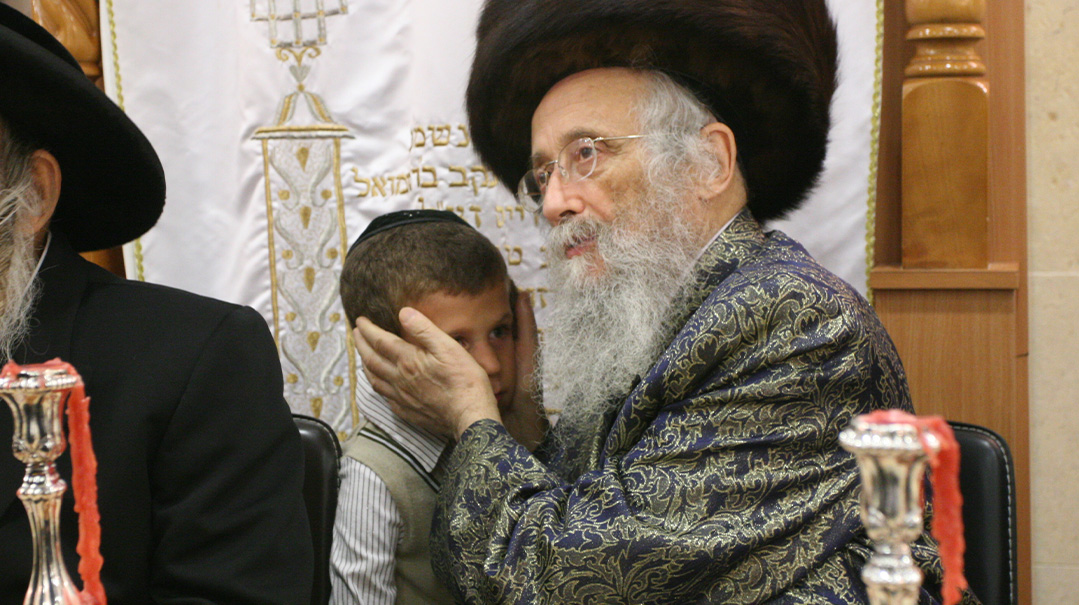
Just weeks ago, I was privileged to sit with the Gaavad for what I suspected would be a parting interview. He was already quite weak with an infection from which he never recovered, and it turned out to be more a mumbled brachah than a conversation. But that was okay, because we’d had several discussions in the past, and a few years back I was even his Shabbos guest, which was an opportunity to see what happens “off hours.”
His beis medrash, like the Gaavad himself, was an eclectic mix — local chassidim and Litvaks, and guests from abroad who took personal pride in the Gaavad as “one of theirs.” And everyone snaking through the long line after davening would get a warm “Gut Shabbos” and a few private words to determine where they were from and who they were related to. The Gaavad seemed to know every community and every family in Europe, and was never at a loss when it came to conversing with his guests: Although he was barely conversant in modern Ivrit, he was fluent in seven languages, including Lashon Hakodesh and Yiddish, English, Flemish, German, Czech, and Hungarian. (Whoever missed the Leil Shabbos greeting knew they could come back for the tish — not of a particular chassidus, but of his own elevated derech in connecting to the holy day.)
Afterward, the Gaavad would take home at least five bochurim learning in the Mir, Brisk, or other local yeshivos, with one condition — they had to be chutznikim. He had a special affinity for them, because he, too, knew what it was like to be on your own, far away from the familiar.
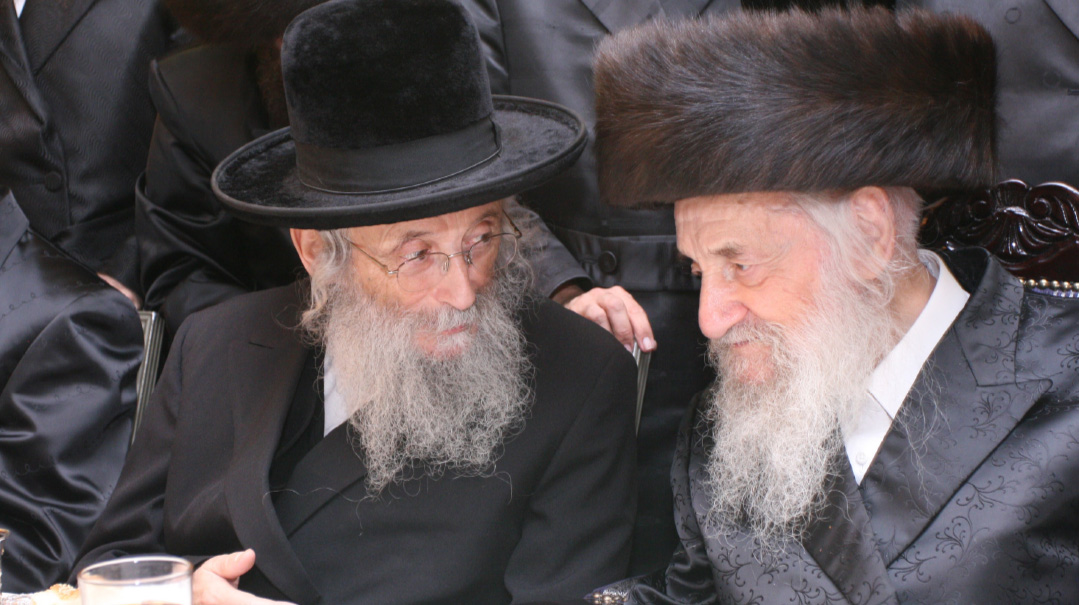
Rav Yitzchok Tovia Weiss had the kana’us of the Eidah, but was as eclectic as his multifaceted background, just as comfortable with poskim such as Rav Vosner as with yeshivish mashpi’im such as Rav Don Segal and with chassidishe rebbes
Rav Yitzchok Tovia Weiss was born in 1926 in the town of Pesing, near Pressburg (today Bratislava, the capital of Slovakia). His father, Reb Shlomo Weiss, was a talmid chacham and the rosh kahal.
Since the closest Talmud Torah was in the city of Pressburg, he attended public school and studied with a private melamed in the afternoons.
“When I was 11 years old, someone gave my older brother a copy of the sefer Eis Laasos, by Rav Hillel Lichtenstein of Kolomyia,” he told me. “That night, I read through the entire sefer, which had some very harsh things to say about studying in a non-Jewish school. I cried all night long, and in the morning, I begged my father to send me to the Jewish cheder in Pressburg. My father took me to the Galanter Rav and presented the question to him. The Galanter Rav told me that it was better to remain in a non-Jewish school and stay in my parents’ home than to go a Jewish cheder far away. Later, I realized how providential his advice had been. Those were the last years that I spent with my parents, Hashem yikom damam.”
He was 12 when the Germans entered his hometown of Pesing on a Shabbos in the spring of 1939 and set the shul on fire. “My family was in the middle of the Shabbos seudah, but when we heard that the aron kodesh was on fire, my brothers leapt into the shul and saved 20 sifrei Torah, which they brought to my parents’ home,” the Gaavad related.
That Motzaei Shabbos, the community leaders were ordered to appear before the SS, who beat and tortured them.
“On Sunday morning, they sent me to Pressburg, to tell the community leaders there what was happening to the Jews of Pesing,” the Gaavad continued. “When I arrived, I found the secretary of the committee, a man named Schwartz. He told me, ‘There’s nothing to do. Nothing can stand in the way of the Germans.’ But then he added, ‘Right now, we’re compiling a list of ten Slovakian children who are being sent to London. If you want to escape, you must sign up right away.’ ”
Yitzchok Tovia tried to sign up, only to learn that the list was already full. But at the last minute, the mother of one of the boys on the list had a change of heart, and the future Gaavad’s name was inserted in his place.
“In 2009,” the Gaavad related, “I met an old man from Canada who told me that he was that boy — he’d somehow managed to escape. If it’s decreed that someone will be saved, Hashem has many ways to save him.”
The transport was organized by Sir Nicholas Winton, who arranged a transport of 669 children from Czechoslovakia just weeks before the war broke out, although he kept it quiet for many years so no one knew who the organizer was. Although Sir Nicholas was born into an assimilated family and his wife was not Jewish, his Yiddishe heart pushed him into this long unknown rescue work. (Rav Weiss tried to meet with Winton many years later, after the story of his rescue became known, but he passed away before the Gaavad could meet him. The Gaavad did send a condolence letter to Winton’s family, in which he wrote, “Your father had the strong moral conviction and determination to save hundreds and thousands from being slaughtered. I’m in awe of his noble character… I, and my entire family of children, grandchildren, and great-grandchildren would not be here if not for your great father. His memory lives on with all of those who are among the living, thanks to him.”
The group of children arrived in London after Shavuos of 1939. That Elul, Yitzchok Tovia celebrated his bar mitzvah together with several of the boys from the Kindertransport at the home of a British woman who took them in.
“It was a hard time,” the Gaavad shared. “We were starving, but our hostess, generous as she was, offered us nonkosher food. I encouraged all the children, who were younger than I, to turn down the meat, while I asked our hostess to try to find alternatives.
“There was a certain bochur with us, the son of a well-known shochet from Pressburg. One day, he was completely overwhelmed by the terrible hunger, and he was about to take some of our hostess’s meat. I went over to him in tears and said, ‘Your father dedicated his life to giving Yidden kosher meat to eat. How could you now eat treif meat?’”
The only sefer that the Gaavad received for his bar mitzvah was a copy of the Kitzur Shulchan Aruch. He spent many long weeks studying the sefer until he had mastered it, his first steps in the realm of halachah.
Just before his 13th birthday, Yitzchok Tovia miraculously received a pair of tefillin and a letter from his father, who was then interned in a Nazi labor camp but somehow managed to get the package to the Red Cross. The letter was a last will and testament from a father who knew he would never see his child again. In it, he asked his son to preserve the minhagim of his home, and also added, “I sense that you have an elevated neshamah, and therefore be careful to wear a gartel during davening.”
By the time the tefillin and letter arrived, both of Yitzchok Tovia’s parents had passed on to the Next World.
Yitzchok Tovia and the other children were eventually taken to the house of the Sassover Rebbe in London, who directed the young bar mitzvah boy to the yeshivah of Rav Moshe Schneider. Rav Schneider was a famed mentor to hundreds of bochurim — first in Germany and later in London, where many refugees blossomed in their Torah learning under his care.
“Rav Schneider, who was a talmid of the Chofetz Chaim, first opened a yeshivah in the German city of Memel (today known as Klaipėda, Lithuania). It sounded like a crazy idea because yeshivos weren’t the style in Germany, but that didn’t stop him,” the Gaavad related.
“At that time,” the Gaavad continued, “he decided to look for a wife. He had just one requirement: that the girl must be willing to cook for the yeshivah students. That’s because in those years, it was customary for yeshivah students to ‘eat teg,’ having their meals at the homes of local residents. But Rav Schneider didn’t know what the level of every potential host was, so he preferred they eat in yeshivah.
“Rav Tzvi Hirsch Levinson ztz”l, the son-in-law of the Chofetz Chaim, suggested the daughter of Rav Gedaliah Kaplan ztz”l, who had been close with the Chofetz Chaim. When Rav Moshe Schneider met with the girl, whom he later married, he asked her only one question: ‘Will you cook for the boys?’ She said she would, and that’s how their meeting began and ended. They married, and she continued to cook for the yeshivah until the end of her life.” Right before the war, Rav Schneider managed to relocate the yeshivah to safer shores in the Stamford Hill section of London.
Reb Yankel Bas of Antwerp, a mechutan of the Gaavad’s daughter and son-in-law Rabbi Avrohom Silbiger a”h, relates that his own father, Reb Yosef Bas, became friends with “Reb Tovia,” as he always called him when they’d meet years later in Antwerp and then in Jerusalem, during the Gaavad’s years as a bochur in London — long before they became related through marriage.
“My father was a founding member of Beis Hamedrash Zeirei Agudas Yisroel — the ‘69 shul’ — shortly after the war, and a certain bochur from Schneider’s Yeshivah named Yitzchok Tovia Weiss was recruited to be the baal korei every Shabbos. This was done for payment, which was well-earned — because in addition to preparation, it entailed quite a walk,” Reb Yankel Bas relates. “Every Sunday, as gabbai, my father would go to Schneider’s and give him an envelope with his remuneration. But one particular Sunday, he arrived at the yeshivah, and Tovia ever so politely told him that this week, he couldn’t accept the envelope. He explained that he always accepted the money as payment for the time spent preparing on Fridays, but that week he’d leined without prior preparation. My father was so impressed with the bochur’s erlichkeit, yiras Shamayim, and dikduk b’halachah — especially since he was a young refugee and could surely have used the money — that he told several people, “Groisse zachen vert arois kummen fun deim Schneider’s talmid (Great things will come from this Schneider talmid).”
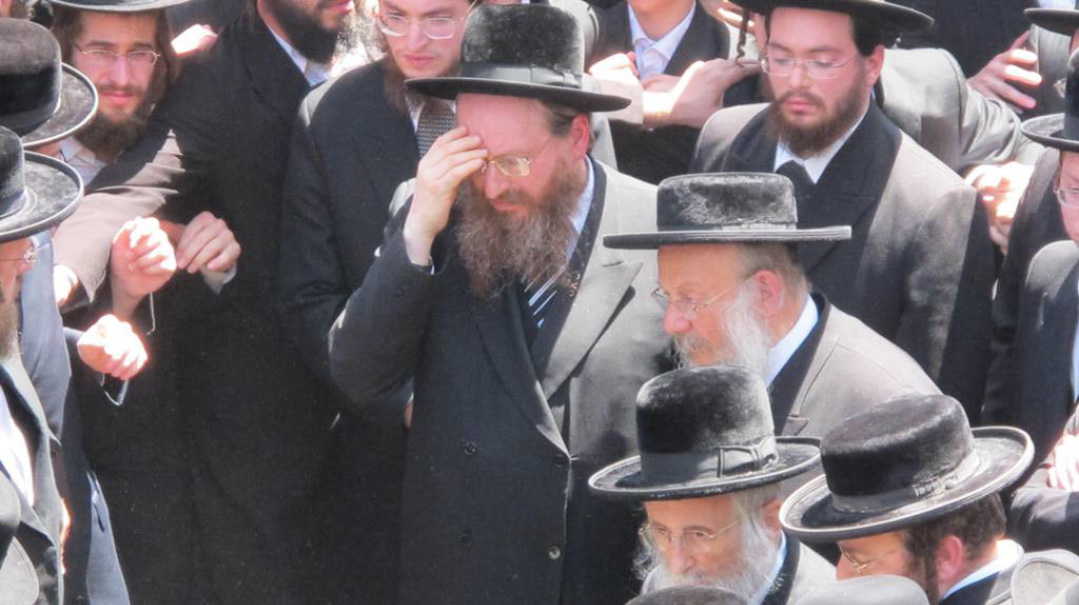
After his marriage in 1950 to Esther Fleischman, his first wife and mother of his four children, Rav Yitzchok Tovia Weiss joined the Gateshead kollel, then led by Rav Eliyahu Dessler. (His second wife, Raisel née Zaidel and widow of Rav Uriel Zimmer, passed away in the late 1990s during their years in Antwerp; his third wife, Golda Shifra née Feldman, whom he married shortly before becoming Gaavad, passed away in 2019.)
“I miss those years of pure Torah learning with no distractions,” the Gaavad told me. Those were my zisse yahren — the sweetest years in my life.”
When Rav Dessler left for Eretz Yisrael to become mashgiach in Ponevezh, Rav Weiss served as head of the kollel in his place.
Rav Weiss eventually moved with his family to London, where he became a maggid shiur at the yeshivah of Rav Elyakim Schlesinger, and later becoming rav of the Eitz Chaim shul.
In 1967, he moved to Antwerp, where he became a maggid shiur at Yeshivas Eitz Chaim Wilrijk; he was later appointed as dayan for the Machzikei Hadas kehillah and served as rav of the Gerrer beis medrash in the city.
When Rav Chaim Kreiswirth ztz”l, rav of the Machzikei Hadas community, was once asked how he could leave his kehillah so often for his many trips around the world for tzedakah and chesed purposes, he responded that he relied on Rav Yitzchok Tovia Weiss to handle all halachic matters in his absence.
After the passing of Gaavad Rav Yisrael Moshe Dushinsky in 2003, Rav Weiss was called to serve. In a way, it was the fulfillment of the words of two special encounters he’d had with two great rebbes of the previous generation.
In the early 1970s, during a private audience with the Beis Yisrael of Gur, Rav Weiss, then a dayan in Antwerp, asked the Rebbe if he should make aliyah. The Beis Yisrael asked him what kind of a position he hoped to get in Eretz Yisrael, and Rav Weiss answered, “Maybe I’ll teach in some yeshivah.” The Rebbe answered, “Don’t come yet. Wait until they summon you.”
At the end of Adar in 1992, Rav Weiss was in the US and spent a Shabbos with the Skverer Rebbe in New Square. After an extremely uplifting Shabbos, he told his hosts, “You know, I felt mamash like I was in Eretz Yisrael.” The following day, he went to Crown Heights for the Sunday “dollars” at the Lubavitcher Rebbe — the very last day the Rebbe gave out dollars before his debilitating stroke. When Rav Weiss approached, the Rebbe asked him, “Are you coming from Eretz Yisrael?” The Rebbe then blessed him with the pasuk, “Yaarich yamim al malmachto [that he many have prolonged days over his kingdom].”
Many assume that the Gaavad adopted the Eidah Hachareidis’s attitudes of kana’us — and especially that that Torah world should not be financed by money from the Israeli government — together with the striped gold caftan of the Yerushalmi community that he began to wear when he took on the position. When the Minchas Yitzchok (Rav Yitzchok Yaakov Weiss), who was head of the Manchester Beis Din for two decades, was appointed to be future Gaavad of the Eidah in the 1970s, the Satmar Rebbe who preceded him said, “A person can become a kanoi overnight, but it is impossible to become a talmid chacham overnight.”
Yet those who were close to the Gaavad relate that back in Antwerp over 40 year ago, Rav Weiss was thinking of leaving the yeshivah where he was a maggid shiur when they introduced secular studies into the curriculum, and was even willing to take a “demotion” as a rebbi in the Satmar cheder, which only taught limudei kodesh. (That never happened, because just two weeks later, he was offered the position of dayan for the Machzikei Hadas kehillah.)
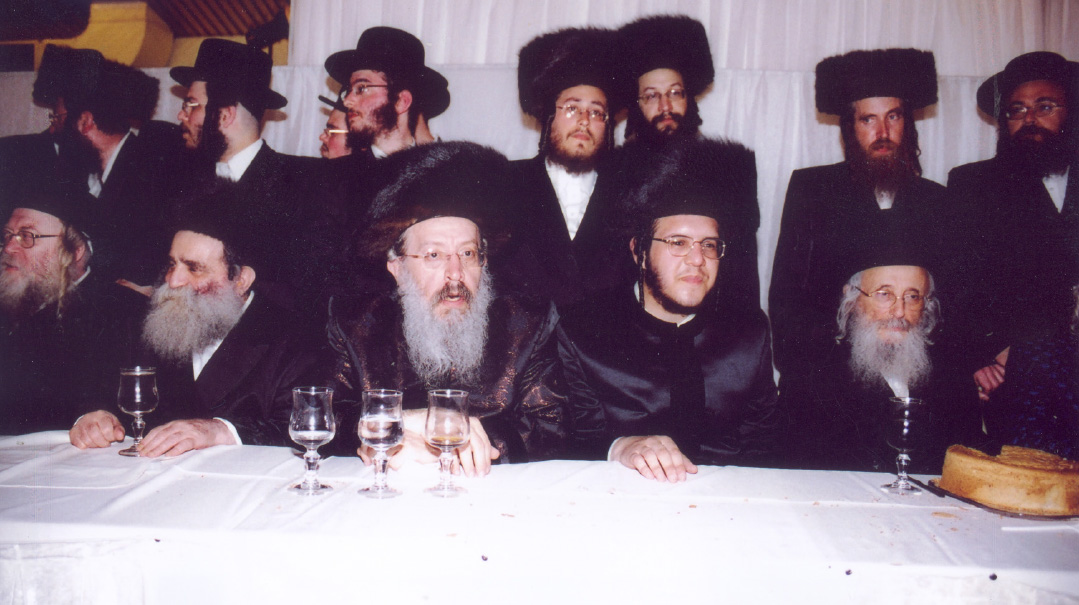
The people of Old Yerushalayim have long been accustomed to division and dispute. The aristocratic posek with European nuances surely seemed an unlikely choice for the leadership of Jerusalem’s most fiery group.
And that idea might even have been cemented by some, the first week he spoke in the beis medrash near the Dushinsky shul that had been allocated to him before he made the move to the Givat Moshe neighborhood. Between Minchah and Maariv, the Gaavad gave a short shiur in halachah, and when one of the participants asked a serious question, the Gaavad thought for a bit, and said, “I don’t know, we have to look into it.”
The Gaavad knew the critical nature of the Yerushalmi public, who was surely trying to assess his Torah prowess. He could have been evasive, or given a partial response, or even not answered. But the Rav, who genuinely wanted to peruse the issue before giving a sensitive psak, conveyed a different message: Greatness is not measured in one’s ability to pull out a brilliant answer on the spot. The greatness of a posek is in his ability to ponder something, to think before giving a response, and perhaps to ask for another day to consider a complete answer. If Rashi didn’t hesitate to write “I don’t know,” the Gaavad didn’t either.
The Gaavad’s first years in his 19-year-tenure were regarded as a period of gentler, less confrontational leadership. But then came a series of shake-ups within the chareidi public in general and the Eidah Hachareidis in particular. There was the Carta controversy, which revolved around the huge underground parking lot outside the Old City that the Jerusalem municipality kept open on Shabbos, leading to a wave of protests. That was followed by a series of battles over the destruction of gravesites. The Gaavad took a fierce, unbending stance on these issues, but at the same time, Rav Yitzchok Tovia Weiss surprised the Eidah with his willingness to speak with government ministers, police commanders, and other officials. Police commanders made regular visits to his home, hoping to prevent protests through dialogue. Every Erev Yom Tov, these officers would approach the Gaavad to receive his brachah.
In recent years, while the demonstrations became fewer, the Gaavad’s personal conduct was the same throughout — it was always driven by what he understood to be Hashem’s Will for him at the time.
When I was his Shabbos guest, for example, I was a bit surprised that his rebbetzin sat opposite him at the table, with the guests alongside. In fact, when he first came to Jerusalem in his new position, a massive kabbalas panim was held in his honor. Afterward, the Gaavad entered a car along with his wife, but a few askanim from the Eidah felt that it wasn’t appropriate for him to travel in the same car as his wife. Someone approached the Gaavad to offer to arrange a separate car for her, but that suggestion was met with unequivocal refusal. “I will ride in the car with the Rebbetzin, and anyone who has a problem with that should keep it to himself,” the Gaavad said.
When he was approached by some rabbanim from the Eidah Hachareidis who proposed building a beis hora’ah with glass windows, through which poskim could receive sensitive sh’eilos from women without close interaction, the Gaavad was horrified. “A posek who cannot speak with a woman should not be a posek,” he told them. He often rejected the requests of certain askanim who asked him to sign a ban on women wearing sheitels.
Although he was adamant on fundamental issues, his heart melted at the pain of another Yid. In 2010, for example, when a demonstration was planned that coincided with Israel’s Memorial Day for IDF casualties, and he realized that the timing would be painful and offensive to the families of fallen soldiers, he made sure the demonstration would be postponed. There might have been a huge ideological abyss between him and the IDF, yet the Gaavad could never ignore the pain of a Jewish mother, no matter how distant her lifestyle was to his own.
And, he never forgot where he came from. Reb Yanky Bas relates that at one point, Rav Weiss became rav of Zeirei Agudas Yisroel. “In the summer of 1965, when my father was still living in London,” he says, “they spent two weeks together in Zeirei Agudas Yisroel summer camp in Switzerland, my father as cook and ‘Reb Tovia’ as rav. Many years later, in 2003, shortly after Rav Weiss took up the position as Gaavad in Yerushalayim, my father was there for a family chasunah and took the opportunity to visit his old friend. During their conversation, my father began to reminisce about their various Agudah experiences over the years, including camp, to which the Gaavad jokingly put his finger to his lips and said to his friend, ‘Sha, sha, nisht du, nisht du’ —meaning, ‘don’t spill the beans here in the Satmar-dominated Eidah Hachareidis that I once had an Agudah connection.’ But I’m sure they knew about that anyway.”
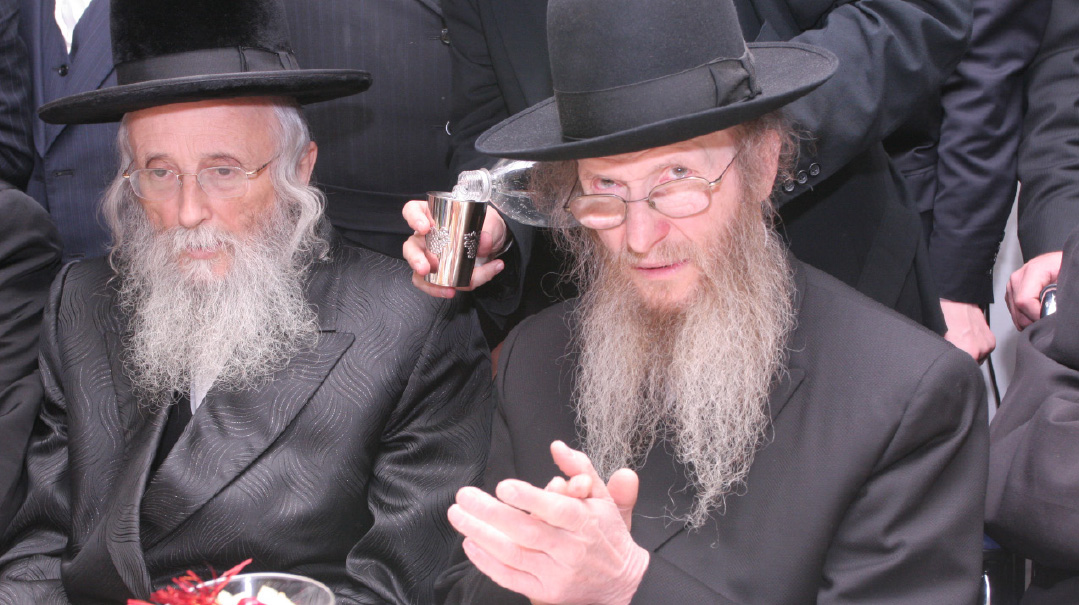
The Gaavad’s life was like a mussar sefer, which is why I can’t shake the memory of our final meeting.“Come over immediately,” the gabbai in charge of the Gaavad’s home called. “The Rav can see you now.”
I dashed over. It was a message I’d been waiting for weeks to receive, as the appointments I’d made were repeatedly cancelled due to the Gaavad’s failing health. When I walked in, though, I admit I was disappointed. I thought we could have some kind of conversation, but the Gaavad was very weak and in great pain, due to an infection in his leg. He sat at the head of the table with a very old sefer in front of him, but he could barely hold himself up. He was clearly exerting himself to peer into the sefer with the bit of strength he had. Forget a conversation. I was grateful if I could get a brachah.
Because specifically those moments, when the pure body was fading but the fire had not yet been extinguished, the skies on Givat Moshe Street in Jerusalem opened, and I saw sublime scenes of a great Yid, who for 95 years of his life, had habituated his every limb and sinew to be ready and subjugated to the Will of the Creator. Only when the gabbai noted that “there is someone here who wants to speak to the Rav,” did the Gaavad turn his head. His lips murmured Bircas Kohanim.
It was a short, fleeting conversation, and even though the gabbai suggested I wait a bit, perhaps it would be a little better soon, I didn’t feel comfortable. A few days later, the Gaavad was hospitalized, and this past Sunday, the 3rd of Av, the city of Jerusalem escorted him on his final earthly journey.
The Gaavad actually had two levayos at Kikar Shabbos in Jerusalem. The first was a joyous affair, as the masses escorted the gadol who had come from Antwerp to lead the Eidah Hachareidis. This week, the procession was a mournful one of grief and loss.
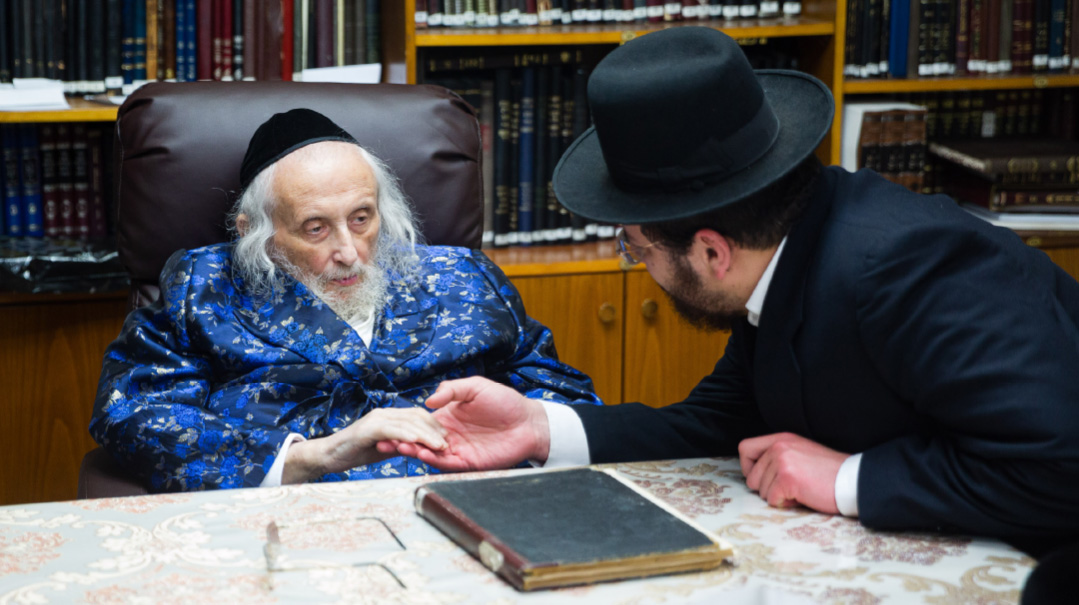
The Gaavad at our final meeting. His body was failing, but his soul was soaring
But I can say that of all the special things I merited to hear from the Gaavad over the years, nothing left a stronger impression on me than that truncated visit two months ago, as the Gaavad’s flame was flickering. It was specifically then that one could see what it means to have a mind that controls the body, and a heart that rules the limbs.
And although he was the leader of the Eidah Hachareidis, he never forgot his years as the rav of the Gerrer shtibel in Antwerp, the brachos he received from the Beis Yisrael and the Lubavitcher Rebbe, and the many interactions and relationships that made up his rich life.
And that’s why, out of all the mourning wall posters plastered around Jerusalem this week, I connected specifically to the one that read, “Yerushalayim ibdah kli chemdasah [Jerusalem has lost its priceless object].” The Gaavad was a kli chemdah — priceless — in Torah and in middos, in firmness in his Torah outlook combined with his soft heart. And his spirit will continue to lead, soft-spoken yet unyielding, gracious yet principled, an unbending defender of the sacred and holy.
Rachel Ginsberg contributed to this report
(Originally featured in Mishpacha, Issue 922)
Oops! We could not locate your form.






